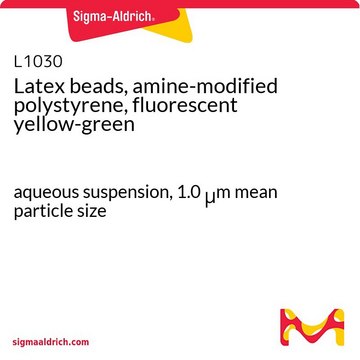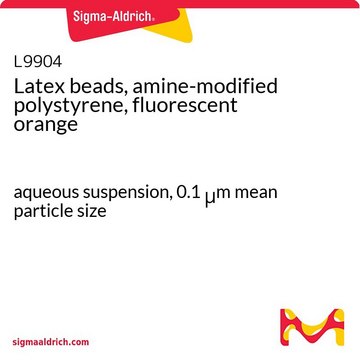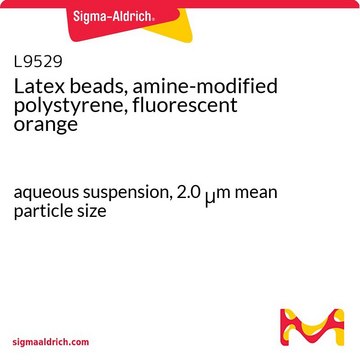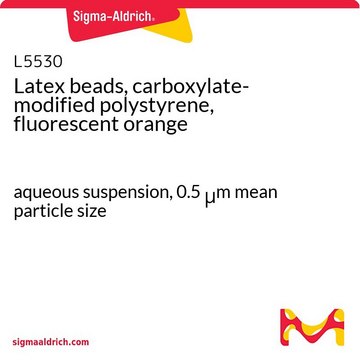L2778
Latex beads, amine-modified polystyrene, fluorescent red
aqueous suspension, 1.0 μm mean particle size
Sinónimos:
Fluorescent latex beads
About This Item
Productos recomendados
form
aqueous suspension
Quality Level
composition
Solids, 2.5%
technique(s)
cell based assay: suitable
mean particle size
1.0 μm
fluorescence
λex ~575 nm; λem ~610 nm
application(s)
cell analysis
¿Está buscando productos similares? Visita Guía de comparación de productos
Application
- to study the effect of Ganoderma lucidum polysaccharides (GLP) on microglia phagocytic behavior
- to study cell phagocytosis in human leukemia cell lines
- in macrophage phagocytosis assay
- to induce detectable engulfment by microglia in Ganoderma lucidum
Biochem/physiol Actions
Storage Class
10 - Combustible liquids
wgk_germany
WGK 3
flash_point_f
Not applicable
flash_point_c
Not applicable
Certificados de análisis (COA)
Busque Certificados de análisis (COA) introduciendo el número de lote del producto. Los números de lote se encuentran en la etiqueta del producto después de las palabras «Lot» o «Batch»
¿Ya tiene este producto?
Encuentre la documentación para los productos que ha comprado recientemente en la Biblioteca de documentos.
Los clientes también vieron
Nuestro equipo de científicos tiene experiencia en todas las áreas de investigación: Ciencias de la vida, Ciencia de los materiales, Síntesis química, Cromatografía, Analítica y muchas otras.
Póngase en contacto con el Servicio técnico











